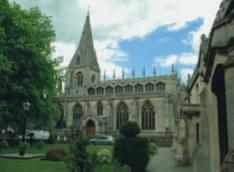Basic HTML Version



BCD Special Report on
Historic Churches
18th annual edition
29
of listed buildings and strongly encourages
them to follow the guidance set out in PPS5.
Under the requirements of PPS5, ‘a
description of the significance of the heritage
assets affected and the contribution of their
setting to that significance’ (PPS5, HE6.1) must
be provided, to put the proposed changes into
the context of the whole building and its local
environment. There is a presumption in favour of
the conservation of designated heritage assets, to
the point that substantial harm, even to a Grade
II building, should be ‘exceptional’ (PPS5, HE9.1).
Those assessing applications need to take account
of the ‘desirability of sustaining and enhancing
the significance of heritage assets, and of utilising
their positive role in place-shaping’ (PPS5, HE7.4).
They are also reminded that ‘the consideration
of design should include scale, height, massing,
alignment, materials and use’ (PPS5, HE7.5).
A balance has to be found, such that:
‘where conflict between climate change
objectives and the conservation of heritage
assets is unavoidable, the public benefit of
mitigating the effects of climate change
should be weighed against any harm to the
significance of heritage assets in accordance
with the development management principles
in [PPS5] and national planning policy on
climate change’ (PPS5, HE1.3). Overall, the
greater the harm to the significance of the
heritage asset, the greater the justification
required for the works (PPS5, HE9.4).
PPS22: Renewable Energy picks up this
theme in saying that where proposals apply
to nationally recognised heritage assets:
‘planning permission for renewable energy
Control equipment inside the ringing chamber Wing
All Saints (Photo: Martin Findlay)
Lead roll clamp securing PV panels at Sleaford St Denys, Lincolnshire
(Photo: David Prescott)
Sleaford St Denys, Lincolnshire, Grade I
(Photo: David Prescott)
‘The panels have certainly proved a valuable addition to the parish
church. First, they speak of our mission as stewards of God’s creation,
caring for one another and the planet we have been given out of
His providence; secondly, they have proved a successful mix of
medieval building and 21st century technology. They cannot be
seen from ground level and the specially-designed attaching clamps
(right) could be removed within a matter of hours, so you would
not know they had been there; thirdly, they provide a useful income
stream which more than pays for our own electricity needs.’
The Revd Canon John Patrick
For more information see http://lincoln.ourchurchweb.org.uk/
sleafordstdenys/docstore/18.pdf
projects should only be granted where it
can be demonstrated that the objectives of
designation of the area will not be compromised
by the development, and any significant
adverse effects on the qualities for which
the area has been designated are clearly
outweighed by the environmental, social
and economic benefits’ (PPS22, para 11).
Given all this guidance, congregations may
feel overwhelmed. A preliminary consultation
with the local authority and denominational
advisory body regarding statutory
requirements, well in advance of making an
application for permission to install PV and
before making any financial or contractual
commitments, will help to avoid frustration
and ensure the best possible outcome.
Before proposing major capital investments
and interventions in the fabric of historic
buildings with the aim of reducing their carbon
footprint, congregations are strongly advised
by denominational bodies and EH to develop
a wider energy strategy for their buildings and
associated land. Congregations are advised to:
1. audit existing energy use, consider the
embodied energy and carbon of existing
and new equipment and assess the place
of worship’s current carbon footprint (see
further information section)
2. identify and implement measures to reduce
the existing level of energy use, for example
changes in heating and lighting patterns,
improvement of equipment such as boilers
and light bulbs, better insulation and the
elimination of drafts (without impeding
proper ventilation)
3. consider switching to a ‘green energy’
supplier
4. assess the potential of microgeneration
equipment, taking into account:
•
the impact on the appearance and
significance of the place of worship
•
the method of fixing and its potential
impact on both the fabric of the
building and regular maintenance (for
example, panels may impede access for
inspection or clearance of rainwater
goods or result in water penetration)
•
the cost of installation, maintenance,
decommissioning and removal relative
to the benefits and savings
•
the projected life and efficiency of the
equipment relative to its impact and
cost.
The Diocese of London has undertaken major
research on the significant reductions in
carbon footprint and the cost of running a
building that can be achieved by responding

